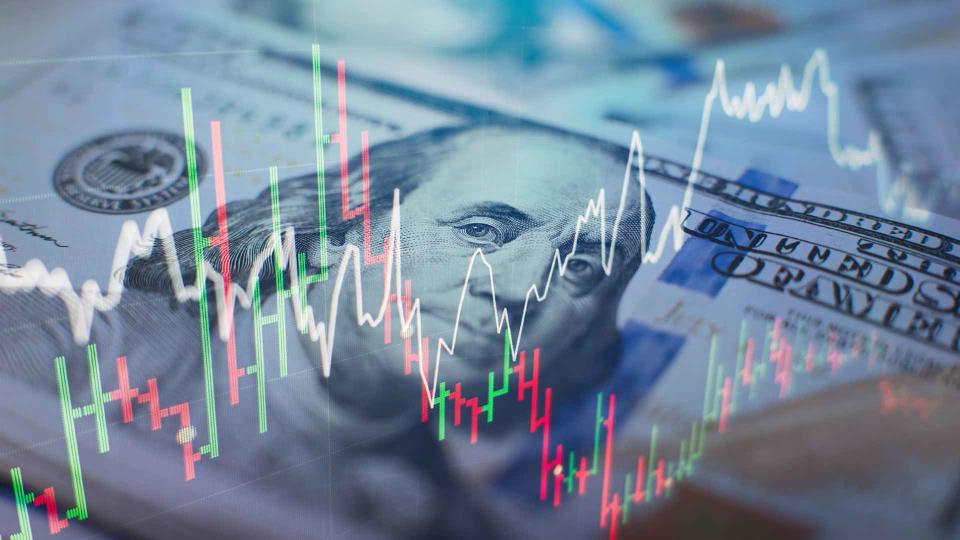What Is an Actively Managed ETF?

The first exchange-traded fund was the SPDR S&P 500 ETF (SPY), created in 1993. This passively managed index fund set the stage for thousands of ETFs to follow.
All of these initial ETFs were passively managed, like SPY, meaning they simply tracked the return of an underlying index without any active intervention by money managers. It wasn’t until 2008 that the first actively managed ETF arrived on the scene — the Bear Stearns Current Yield Fund — and it took another decade before actively managed ETFs really began to take hold.
Be Aware: 3 Types of Investments Predicted To Plummet in Value in Summer 2024
Find Out: 4 Genius Things All Wealthy People Do With Their Money
But what exactly are actively managed ETFs, and how do they compare with passive ETFs and traditional mutual funds? Read on to learn the pros and cons of this relatively new asset class.
Wealthy people know the best money secrets. Learn how to copy them.
How Do Actively Managed ETFs Differ From Passively Managed Ones?
Most investors are familiar with S&P 500 index funds like SPY and IVV. These funds passively track the return of the S&P 500 index without any manager intervention. In other words, these index funds own the stocks in the S&P 500 and add or replace them as the index itself changes. Managers have no ability to pick and choose their own stocks to add or remove from the ETF’s portfolio.
Actively managed ETFs, on the other hand, are portfolios controlled completely by professional money managers, who buy and sell whichever investments will meet the written objectives of the ETF.
For example, the largest actively managed ETF is currently the JPMorgan Equity Premium Income ETF, with approximately $33.59 billion in assets. Rather than tracking an underlying index, this ETF owns stocks hand-selected by its managers and then sells call options against them, generating monthly income for investors. This type of investment strategy obviously requires knowledgeable, active managers who can both pick the right stocks and sell the right options to generate income, and so it’s best served in an actively managed ETF format.
Other actively managed ETFs simply use managers to select individual stocks, bonds or other investments on behalf of investors, in line with their written objectives.
Learn More: 10 Valuable Stocks That Could Be the Next Apple or Amazon
How About Traditional Mutual Funds?
In one sense, actively managed ETFs are akin to traditional mutual funds, the development of which was in the exact opposite fashion to ETFs.
The first traditional mutual funds — and indeed, the vast majority of them even now — were actively managed, with only a few passively managed funds now available. As of 2022, for example, there were 6,585 actively managed mutual funds but only 517 passively managed ones, a ratio of nearly 13:1.
In that sense, actively managed ETFs take after their traditional forerunners, with professionals picking and choosing individual investments on behalf of investors. However, the primary difference between actively managed ETFs and traditional mutual funds is that ETFs, as their name suggests, trade on an exchange. This means they can be bought and sold at any time that the market is open. Traditional mutual funds, on the other hand, can only be bought and sold once per day, after the market closes.
What Are the Pros and Cons of Actively Managed ETFs?
Actively managed ETFs, like any investment, have both pros and cons. Whether or not they are a good investment for you depends on your objectives, risk tolerance and personal preference. Here are the primary benefits and drawbacks of investing in actively managed ETFs.
Pros
Usually lower expense ratios than traditional actively managed mutual funds
Professional management rather than blind index tracking
Potential for higher returns thanks to expert management
Can be bought and sold any time the market is open, unlike with traditional mutual funds.
Cons
Expense ratios are generally higher than with passively managed ETFs or mutual funds.
Have the potential to underperform passively managed ones if the managers make poor selections
Investors may not know exactly what is in an actively managed portfolio vs. knowing exactly what is in an index fund.
The Bottom Line
On the surface, actively managed ETFs look and trade just like their passively managed counterparts. However, under the hood, there’s a lot more going on. Professional money managers are picking and choosing individual stocks, often without investor knowledge until the funds issue their monthly or quarterly updates.
If you believe that the managers you are hiring can outperform market indexes, then an actively managed ETF may be for you. But as most active managers have trouble beating the market on a consistent basis, you’ll have to be sure you pick exceptional managers.
More From GOBankingRates
I've Secretly Put Us in Serious Debt: How To Break the News to Your Spouse
This is The Single Most Overlooked Tool for Becoming Debt-Free
This article originally appeared on GOBankingRates.com: What Is an Actively Managed ETF?

 Yahoo Finance
Yahoo Finance 